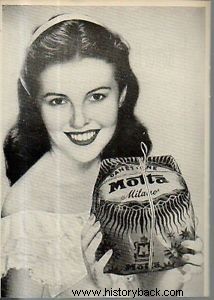
Old advertisement for the Motta panettone
Also this year, with the approach of Christmas, I decided to dedicate numerous posts to the topic on Pills of Stories and I thought it appropriate, to begin with, to do a little research to discover the distant origins of panettone and del pandoro , the two desserts that best represent at the table the most loved recurrence for adults and children.
On the panettone I discovered that it comes from Milan and that it seems to have already existed in the 13th century, although in a different form from how we know it today, that is, as a first bread enriched with yeast, honey, raisins and pumpkin.
In the 1600s we find it in the form of a coarse focaccia made of wheat flour and grapes, while in the 1800s it is much richer thanks to the addition of substantial ingredients such as eggs and sugar.
The raisins it was also present in this more recent version of the Christmas cake, as it had the value of lucky charms and therefore the task of announcing prosperity and wealth (a bit like lentils for us on New Year's Eve).
Among the numerous legends arose around the panettone over the centuries, a narrates that at the court of Ludovico il Moro the presence on the table set to celebrate Christmas Eve had been announced of a new and very particular dessert, a dome-shaped bread mixed with grapes which, however, burned during cooking, throwing the cook into the more gloomy despair.
A scullery boy named Toni however, he had a brilliant idea:to serve the dessert anyway and make it pass for a specialty in crust.
The success among the diners was immediate:the "pan del Toni" was born.
Only in the 19th century, however, the "pan del Toni "Began to take on the typical characteristics of modern panettone, and in the early 1900s the shape and packaging we are used to seeing today, stemming from an idea by Angelo Motta ( Photo from:ciabattine.net
